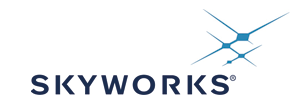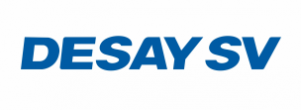DGMIC – Publication of the summary of the consultation on standards for terrestrial digital radioFollowing the public consultation to seek the views of stakeholders on standards for digital radio launched in April 2012, the Minister of Culture and Communication published a summary of contributions collected.
The Government has been seized of a request in December 2011 the Supreme Council of Audiovisual (CSA) to the effect that the DAB + standard is added to the standards already allowed for the spread of terrestrial digital radio (DAB) in France, the frequency bands III and L. This request was based on the work carried out in the framework of the Observatory of digital radio, set up by the Council, which allowed to see significant development of this standard in Europe and the wish expressed by several national radio actors can use in France.
From the perspective of a response to the Council’s request, the Government wanted to seek the views of stakeholders on the opportunity to introduce DAB + Band III and in L through consultation with the form a synthesis. The opportunity of this consultation closed on 20 May 2012, has also been asked to interview players on the relevance of the standards used in the medium and longer term ways complementary digital radio broadcasting.
Responded to the consultation:
– The leading French: Radio France, the major private members of the Bureau of Radio, the radio stations, including through the National Union of Free Radios (SNRL) and the National Confederation of associative radios (CNRA); independent radio: the Union Interprofessional independent radio and television (SIRTI) Hearsay FM, Radio FG, Radio Nova, Jazz radio, Radio France East and North Africa 2, two radio projects, a radio;
– The company Onde Numérique, a candidate for the distribution of digital radio services in the L band;
– OEMs and designers of chips, French and foreign, including the Union of audiovisual electronic industries (Simavelec) and the Union of trading companies of audio, video and computer (SECIMAVI);
– The leading provider of technology diffusion (TDF VDL). TowerCast did not respond, but its parent NRJ Group has done;
– Foreign publishers, the RTBF and Commercial Radio Australia, which represents 99% of Australian commercial radio; Dutch public broadcaster NPO;
– International associations and standardization WorldDMB Forum DRM Consortium; associations promoting digital radio Digital Radio, Digital Radio and Digital UK
Radio Norge, the consulting firm Broadcast Associates;
– The audience measurement company Médiamétrie;
– Two individuals.
All or almost contributors (see I.) supports authorization shortly DAB + standard for broadcasting digital radio services in Band III and L In case of approval of DAB +, maintaining the standard T-DMB in the order “signal” worry OEMs and independent radio and associations who contributed to the consultation.
The editors point out, however, that the broadcast standard is one of the factors of the economic model of the NTR and the choice of the standard by the Government is not nature, it alone, to allow a successful launch of the RNT1:
– Publishers officers of the radio are calling for a global approach, based on broad stakeholder consultation, which includes a macroeconomic analysis
prospective on the model that produced during the launch of digital terrestrial television. The major issues are, according to them, the evolution of the media generate revenue, the number of players that can coexist and sustainability of the terrestrial platform against the alternative means of receiving digital radio, including IP networks ;
– The SIRTI, which advocates the establishment of a government working group involving stakeholders and radio ministries, under the aegis of the Prime Minister, said he primarily focused on equal access radios resource planning (allotments, consistent coverage areas; organization multiplex equal rates between programs) and the financial support of community radio stations by public authorities (cost control system, to aid investment, advocacy and public information). These concerns are shared by the CNRA;
– The arrangements related to the launch of the TNR seem less concerned independent radio and community radio stations who responded to the consultation.
Apprehensions OEMs focus on the risks of geographic deployment only partial, or even a launch failure of the RNT, as well as the possibility of a weak use of the standard T-DMB if it must coexist with DAB +. In either case, OEMs consider the return on investment needed to create lines of digital receivers would be compromised. For these reasons, and Simavelec SECIMAVI require opening a debate on the regime of bonds to which they are subject (see III., And V.).
Some stakeholders questioned the role of broadcast terrestrially, notably vis-à-vis the radio over IP (see IV.).

















